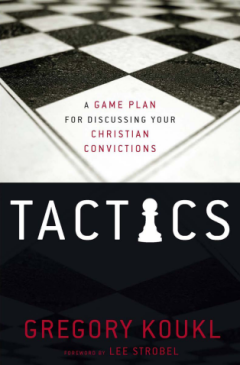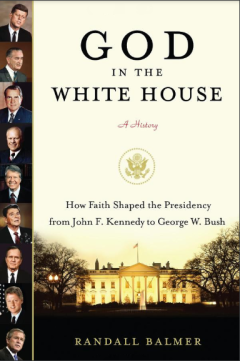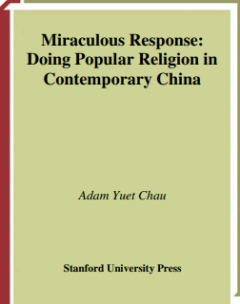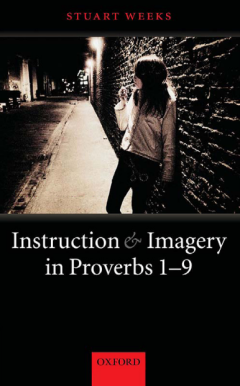Map
Musical Score
Serial Publication
Sound Recording
Susan;;First Edition ;;;Fictio
melainkan satu kisah besar ten
dan kemuliaan Allah adalah tuj
kita juga menjadi bagian dari
Susan;\";\";\";\"First Edition
Padmo;;;;0001;059BIO;Non Ficti
efisiensi
Sigit\";;;;0002;060BIO;Non Fic
P.A. Van
K. (Translator)\";;;;0003;032K
Yan
Irene (Translator)\";;;;0004;0
Irene (Translator)\";;;;0005;0
Joyce;;;;0007;063BIO;Non Ficti
Osamu
Maya (Translator)\";;;;0008;06
Strategi dan Penerapan;Pohan
J.D.;;First Edition;;0010;075P
The;Bastiat
Tom;;Third Edition;;0012;065 B
harga Rp. 496.000;;;;;;
Dyan
Landung\";;;;0013;652 ART;;;;;
The : A Friendship that change
sejarah dan kisah-kisah di sek
Iwan;;;;0018;655 ART;;;;;;SBI-
Iwan;;;;0019;656 ART;;;;;;SBI-
Iwan;;;;0020;658 ART;;;;;;SBI-
Iwan;;;;0021;658 ART;;;;;;SBI-
Iwan;;;;0022;658 ART;;;;;;SBI-
Jerry J
Paul D.
Donald E.\";;Second Edition;;0
Peter;;;;0024;659 ART;;;;;;978
Noor Azlina
Inger McCabe
Donald
Rudolf
Haryani
Maria Wronska-\";;;;0026;661 A
Ima Mahdiah
Sakti\";;First Edition;;0028;0
Sakti\";;First Edition;;0029;0
Isa Fleischmann-
Maria Wronska-
Donald J.
Rudolf G.
Itie
Sonya\";;;;0033;665 ART;;;;;;9
Elizabeth;;;;0034;077 POL ;Aca
Elizabeth;;;;0035;077 POL ;Aca
The ;Ryle
John Hart
Mark
John
Emi
Stephen
Jacqueline
Rosalyn (Editor)\";;Ninth Edit
Rita Sri (Editor);;;;0038;024
Robert I.
Huggy\";;First Edition;;0039;2
Felicitas;;First Edition;;0040
Denise Patry
Michelle\";;;;0041;667 ART;;;;
Slamet
Rafli L.
John N. (Editor)\";;First Edit
The;\"Bugler
Marcus
Maud
Iain\";;;;0044;668 ART;;;;;;97
Lidia Matticchio
Tanya Bastianich\";;;;0045;026
Mardiyah;;;;0046;078 POL;Acade
Mardiyah;;;;0047;078 POL;Acade
Mardiyah;;;;0048;078 POL;Acade
Mardiyah;;;;0049;078 POL;Acade
Mardiyah;;;;0050;078 POL;Acade
Mardiyah;;;;0051;078 POL;Acade
The : Seni Meraih Peluang - Ca
Parker
Matt\";;First Edition ;;0052;2
Setyo Hajar;;First Edition;;00
R.A.
Ivanka;;;;0056;068 BIO;Academi
Ivanka;;;;0057;068 BIO;Academi
Damos Damuli;;First Edition ;;
The : A Coup that misfired : a
Haruki
Jay (Translator)
Philip (Translator)\";;;;0060;
Moammar;;Ninth Edition ;;0061;
Moammar;;Ninth Edition ;;0062;
Margot Lee;;First Edition;;006
Malcolm;;Second Edition;;0065;
Igor
Dono (Translator)\";;;;0066;06
Jim
Satrio (Translator)\";;Fourth
John M.
Hassan\";;Third Edition;;0068;
Debbie
Glen
Harga Rp. 412.000;;;;;;
John;;Second Edition;;0071;032
Lucky Bayu ;;;;0072;210 BIS;Ac
Syakieb (editor)
Seno Joko (editor)
Wicaksono (editor)\";;First Ed
Laksmi;;Sixth Edition;;0074;06
The : A user-friendly handbook
The : Unequal societies and wh
harga Rp. 466.000;;;;;;
Jean
Sherry (editor)\";;;;0077;670
Sherry (editor)\";;;;0078;671
Hartono
Helen
L.R. Supriyapto
Xenia\";;;;0079;672 ART;;;;;;9
Xenia\";;First Edition;;0080;6
Saptono (editor)\";;First Edit
Indonesia;395;;;HUK 35;;;Indon
The : Strategi Manajemen Trans
Kyungmook\";;First Edition ;;0
H. Dadang Husen;;First Edition
Yakub;;;;0087;214 BIS;Academic
Iradatul (editor)\";;First Edi
Indonesia;260;;;HUK 37;;;Indon
H.;;First Edition;;0091;038 HU
Threes
Samuel\";;First Edition;;0092;
Lilik\";;;;0093;216 BIS;Academ
Indonesia;400;;347.91;HUK 39;3
Indonesia;1012;;;HUK 40;;;Indo
Laurie E.
Ding
Kanazawa
Li
Quan
William R.
Li (editor)
Virginia L. (editor)
He (editor)\";;;;0096;675 ART;
Wing Meng;;;;0097;676 ART;;;;;
Oriental\";English;Beli di Kin
Haris;;;;0099;679 ART;;;;;;978
Xenia\";;Second Edition;;0100;
Kahfiati
Kim Jane
Ratna
Suwati
Sian E. (editor)\";;First Edit
Komarudin
Djalu
Herman
Zaini
Safriyaningsih Ken (editor)\";
H. OK.;;Ninth Edition ;;0103;0
Michael C.;;Tenth Edition;;010
Xenia\";;First Edition;;0105;6
Xenia\";;Second Edition;;0106;
Xenia\";;First Edition;;0108;6
Rose
Sapardi Joko
Kartini
Neneng
Sonya (editor)\";;First Editio
Rajab (editor)\";;Second Editi
Max (editor);;First Edition ;;
Mark ;;First Edition ;;0117;05
Gender and Networks in Post-Su
harga Rp. 952.000;;;;;;
The : A Toolkit for Thinking a
harga Rp. 849.000;;;;;;
Sally
Marshall\";;First Edition ;;01
Danielle;;First Edition ;;0122
In : An Anthology of Discourse
Steven H.;;Fifth Edition;;0126
Pramoedya Ananta
Julius Surya
Yanuari (editor)
Galang Aji (editor)\";;First E
Indonesia;356;;300;POL 089;300
Indonesia;356;;300;POL 089;301
Xu
Erling (translator)\";;First E
Indonesia;214;;;KUM 36;;;;Harg
Kris Wijoyo;;First Edition ;;0
The : The Battle to Save the W
Paolo;;;;0140;218 BIS;Academic
orang dekat
Syaifullah
Luqman Hakim (editor)
Wiyanto (editor)
Teguh (editor)\";;First Editio
Hery
Gajah
Setyardi
Fahmi
Stefanus Arief
Hendra
Maftuh
Sepudin
Surya Mahendra
Lukas Hendra Tri
Galih
Yusuf Waluyo
Maria Y.
Lutfi
Tomy\";;First Edition ;;0144;2
J.A.C.;;First Edition;;0145;22
J.A.C.;;First Edition;;0146;22
The : How to make extraordinar
The : From Arsenic to Xanax
David (editor)
JJ (editor)
Wasmi (editor)\";;First Editio
JJ (editor)\";;Second Edition;
Kapitalisme Cina dan Anti Cina
Wasmi (editor)\";;Second Editi
JJ (editor)\";;Third Edition;;
Steve;;;;0154;096 POL;Academic
Steve;;;;0155;096 POL;Academic
Steve;;;;0156;096 POL;Academic
Steve;;;;0157;096 POL;Academic
Indrawati
Dyah\";;Second Edition;;0158;6
Iwan;;Second Edition;;0159;690
Indonesia;;;759.9598;ART 691;7
Sun
Lionel (translator)\";;First E
Fred B.G.;;First Edition ;;016
Inung (editor)
Wanda Ayu (editor)\";;First Ed
Natalie
Miya\";;First Edition ;;0166;2
Retail
Miya\";;First Edition ;;0167;2
Philip
Hermawan
Den Huan\";;;;0168;223 BIS;Aca
Indonesia;404;;336.2;BIS 224;3
Richard;;;;0171;692 ART;;;;;;9
Ibrahim ;;First Edition;;0173;
Samuel\";;First Edition ;;0174
The ;Susanto
John (editor);;First Edition;;
Duncan
Suryo (translator)\";;Sixth Ed
Yana Shanti (translator)\";;Fi
Hasna;;First Edition;;0181;075
Hasna;;First Edition;;0182;075
Lian;;First Edition;;0183;056
your guide to understanding th
Setyanto P.;;First Edition;;01
Johan
Siti
Sanjaya\";;First Edition;;0187
Enung
Damaika (editor)\";;First Edit
The : The Return of Religion a
harga Rp. 457.000;;;;;;
Jejak Sejarah dan Pembangunan
Tjuk (editor)\";;First Edition
Miranti Serad
Made Mastianta (editor)
Tri (editor)\";;First Edition;
words and music inspired by th
David
Khan\";;First Edition;;0194;69
harga Rp. 585.000;;;;;;
Indonesia;515;Sekitar Perang K
Indonesia;642;Sekitar Perang K
Indonesia;669;Sekitar Perang K
Mang Eri;;;;0198;077 BIO;;;;;;
Frena
Rony (editor)\";;First Edition
not just a Living : 10 ketramp
Lyndon (editor)\";;;;0200;232
Wee Chow
Lee Khai
Soesanto (translator)\";;Sixth
Jeffrey A.
Sori (translator)
Rusdi (editor)\";;;;0202;104 P
The;May
Peter;;First Edition;;0204;106
Indonesia;380;;959.803;POL 107
Indonesia;193;;;POL 108;;;Indo
Kahlil
Neil (editor)\";;;;0207;057 SA
Neil (editor)\";;;;0208;058 SA
The : Stories of remakable enc
Victor\";;Second Edition ;;020
The : Family
Lao
James (translator)
Sarah (editor)\";;;;0212;036 K
Indonesia;50;;;KUM 46;;;Indone
Indonesia;56;;;KUM 47;;;Indone
Indonesia;27;;;KUM 48;;;Indone
Indonesia;42;;;KUM 49;;;Indone
Indonesia;176;;;KUM 50;;;Indon
Indonesia;58;;;KUM 51;;;Indone
Indonesia;106;;;KUM 52;;;Indon
Joop (editors)
Judi -- Sidharta
Kuan Ware Chun Ware;;;;;0221;6
Kuan Ware Chun Ware;;;;;0222;6
The;\"Freeman
Selena
Sophie\";;;;0223;697 ART;;;;;;
Djaka;;;;0224;;;;;;;;Universit
Door L. ;;;;0225;235 BIS;Acade
Door L. ;;;;0226;236 BIS;Acade
Robert Hatfield
Keita (translator)
Lawrence (translator)
Hiromu (creator)
Seizo
Gakuji
Iwao
Masamichi
Takeakira
Yoshiaki
Taka\";;;;0230;701 ART;;;;;;;K
Sunu\";;;;0231;702 ART;;;;;;;K
Jakarta;\"Hara
I. B.
Jeannine
Marie
Madeleine
Michele
Eileen
Sarah\";;;;0233;704 ART;;;;;;;
Stockholm;\"Hara
Indonesia;346;;340;HUK 053;340
Paul
Tania (editor)
Matthieu (editor)\";;First Edi
Gerald S.;;;;0238;110 POL;Acad
Hasna
Francois
harga Rp. 229.000;;;;;;
Tan
Fatmawati
Indonesia;273;;800;BIO 080;800
Pangeran
Indonesia;678;;306;BIO 081;306
Indonesia\";415;;920;BIO 082;9
Niccolo
Yudi (translator)
Sovia (translator)
Imam (editor)\";;First Edition
Kuncoro
Indonesia;986;;800;POL 114;800
The;\"Raffles
Eko (translator)
Nuryati (translator)
Idda Qoryati (translator)\";;F
harga Rp. 208.000;;;;;;
Habib
Muhammad
Ying
Noor (translator)\";;Second Ed
Samuel\";;First Edition;;0263;
The;Steel
Edwin\";;First Edition;;0266;1
Indonesia;187;;;68 HUK;;;Indon
The : A Mistborn Novel;Sanders
Nederland en China;Blusse
Gunawan
Reda\";;;;0270;060 SAS;;;;;;;P
Pierre Alex;;;;0272;061 SAS;;;
Pierre Alex;;;;0273;062 SAS;;;
Jessica Natalia;;First Edition
Daud;;First Edition;;0275;124
Kresno;;First Edition;;0276;70
Sigit Aris;;First Edition;;027
H. Eddy;;First Edition;;0278;2
Richard
Nancy
Noor (translator)\";;Third Edi
Greg;;Second Edition;;0280;084
Right Now
Philip (translator)
Ted (translator)\";;First Edit
Gabriel;;;;0284;071 NOV;;;;;;9
Gerrie;;;;0287;;;;;;;978981051
The : The Startling News about
Stephen\";;;;0288;059 KES;Acad
Male -- Aging\";English;Harga
Gunter (editor)
Ursula (editor)
Petrus
Klaus
Giancarlo
Edi
Dirk A.M.
Paul A.
Robert
Lynda\";;;;0290;060 KES;Academ
Sumaryo;;;;0291;068 HUK;Academ
Rebecca
Tom
Ian
Tynan
Rebeka\";;Sixth Edition;;0292;
Jay
Judith A. Schilling
Joan M.
Lorraine
Janet
Dorothy
Leigh Ann
Diane
Karen C. (editor)\";;;;0293;06
Maya
Nia
M.N. Retno (editor)\";;First E
Dewan Perwakilan Rakyat
Indra (editor)\";;First Editio
Yati Mariana
Nining I. (editor)\";;First Ed
Ratu Munawwaroh Zulkifli
Sativa Sutan
Laksmi
Ida
Ita
Ida (editor)
Didi (editor)
Mengchen (translator)
Stefan (translator)
George (translator)
Rory (translator)\";;Second Ed
hidup
Zia (translator)\";;Third Edit
Yulius (translator)
Robert T.
Paulus (translator)
Pandam (translator)\";;Second
Jimly
M. Ali\";;Fifth Edition ;;0308
Hak Pengelolaan
John C.
Les
Marlene (translator)\";;Fourth
Kennie (editor)\";;First Editi
Ray
Laura
Simon
Wendy\";;;;0313;;;;;;;97817422
Indonesia;590;;;HUK 072;;;Indo
The : Timeless insight for the
Renuka (editor)\";;;;0315;034
Emily Jane;;First Edition ;;03
Viktor
Thomas\";;First Edition ;;0317
Jack
Suk (editor)
maxims
Duncan;;First Edition ;;0319;2
Iwan
Didi (editor)\";;;;0321;129 PO
John F. (editor)
Kathryn (editor)\";;First Edit
Jessica
N. Luky (editor)\";;Third Edit
Mitra
Milly Indra (editor)
Haryani (editor)\";;;;0324;;;;
Haryani (editor)\";;;;0325;;;;
Haryani (editor)\";;;;0326;;;;
Indonesia;66;;;;;;Indonesia;Ha
Hans
Raisul (translator)\";;Tenth E
Rosleny
Thomas E.
Yudi (Translator)\";;First Edi
Mia;;First Edition ;;0333;076
Walter
Mursid (translator)\";;Third E
Suluh (translator)
Indonesia;735;;621.39092;BIO 0
Huala;;Fourth Edition;;0336;07
The;\"Byrne
Susi (translator)\";;First Edi
Howar (translator)\";;First Ed
The;Laham
Nicola\";;;;0340;075 NOV;;;;;;
Jillian;;First Edition ;;0341;
Moammar;;;;0342;040 KUM;Non Fi
Inspirator Kartini;Irawan M.N.
Nurcholish;;Second Edition;;03
Kristin (editor);;First Editio
Sigit Aris
Tofik (editor)\";;First Editio
The;\"Fontein
R. (essays)
Edi (essays)\";;;;0348;717 ART
Mirzadelya
Mulia
Talisa
Robin Hartanto (editor)\";;Fir
Nugroho
Firoz (editor)
Ifdahl (editor)
Niar (translator)
Iman (translator)\";;Second Ed
Fauzi (translator)
Si Anak Kufur;\"Gibran
Reni (translator)
Dona Heri (translator)
Sony (editor)\";;First Edition
Gilles;;;;0355;720 ART;;;;;;97
Mustofa W. (editor)\";;First E
J.;;First Edition ;;0357;079 H
Yoshihiro
Stewart (translator)
Martin (translator)\";;Second
The;\"Reid
Paul (illustrator)\";;First Ed
Daniel\";;Fifth Edition ;;0361
Indonesia;274;;;HUK 080;;;Indo
Warren;;First Edition ;;0363;7
Resort
Jacob Salwyn
Louis L. (editor)\";;;;0365;13
John (translator)
Indonesia;114;;;SAS 067;;;Indo
Ven. Weragoda Sarada
Yakob F. (translator)
Indonesia;84;;294.3444;AGA 035
Technique and Treatment : Intr
Judy (translator)\";;;;0372;06
Susan K.
Jan
Patrick J. (editor)
Martin S. (editor)
David G. (editor)\";;;;0373;06
Rebecca\";;Second Edition;;037
Gizo
Yujin (translator)
Keizaburou (illustrator)\";;;;
Louise
Kay Kobor
Linda
Meredith (illustrator)
Jane (author)\";;Third Edition
The : A Complete Guide to Budd
Sumasto, Padmo
Samah, Kristin\nTriyono, Sigit
der Weij, P.A. Van\nBertens, K
Qicheng, Yan\nChristin, Irene
Endah, Alberthiene
van Fenema, Joyce
Tezuka, Osamu\nRosewood, Maya
Pohan, Chairil Anwar
Legge, J.D.
Plate, Tom
Lewis, Michael
Veldhuisen, Herman C.\nSetiadi
Tirta, Iwan
Weygandt, Jerry J\nKimmel, Pau
Lee, Peter
Yunus, Noor Azlina \nYayasan B
Elliott, Inger McCabe\nHaake,
Watodey, Agustinus
Dimitry, Ima Mahdiah\nBudiono,
Heuken SJ, Adolf
Heck, Isa Fleischmann-\nFriend
Smit, Lucienne
Van Hout, Itie\nWijs, Sonya
Pisani, Elizabeth
Ryle, J.C.
Hastuti, Rita Sri (Editor)
Sutton, Robert I.\nRao, Huggy
Titus, Felicitas
Leidy, Denise Patry\nProser, A
Pinardi, Slamet\nSato, Rafli L
Sniukas, Mark\nLee, Parker\nMo
Samantho, Ahmad Y.
Dewantoro, Setyo Hajar
Kartini, R.A.\nNurcholish, Ahm
Trump, Ivanka
Hughes, John
Murakami, Haruki\nRubin, Jay (
Emka, Moammar
Shetterly, Margot Lee
Scott, Malcolm
Pozar, Bojan\nOmerza, Igor\nSu
Echols, John M.\nShadily, Hass
Newman, Debbie \nWoolgar, Ben
Doherty, Glen\nWebb, Brandon
Ventura JD, John
Purnomo, Lucky Bayu
Sungkar, Syakieb (editor)\nSuy
Pamuntjak, Laksmi
Wilson, Lee
Stiglitz, Joseph E.
Sumarsono, Hartono\nIshwara, H
Lee, Christopher
Song, Jaeyong\nLee, Kyungmook
Sobana, H. Dadang Husen
Liman, Yakub
Property Plus Indonesia\nAini,
Tchaikovsky, Adrian
Tim Redaksi Laksana\nAyun (edi
Purwosusilo, H.
Emir, Threes\nWattimena, Samue
Diana, Anastasia\nSetiawati, L
Sarwono
Ho, Wing Meng
Wood, Nigel
Lie, Haris
Ishwara, Helen\nYahya, L.R. Su
Kahdar, Kahfiati\nSaunders, Ki
Kudiya, Komarudin\nDjatmiko, D
Saidin, H. OK.
Tang, Michael C.
Sumarson, Hartono\nIshwara, He
Mitchell, Rose\nJanes, Andrew
Damono, Sapardi Joko\nMulyadi,
Marsetio\nRitonga, Rajab (edit
Lane, Max (editor)
Manson, Mark
Dewi, Kurniawati Hastuti
Farnsworth, Ward
Helgesen, Sally\nGoldsmith, Ma
Steel, Danielle
Santosa, Agus\nTarigan, Andi (
Gifis, Steven H.
Toer, Pramoedya Ananta\nToer,
Djohan, Julius Surya\nPr, A. B
Tim Medpress (editor)
Hongci, Xu\nToh, Erling (trans
Experd Tim (editor)
Soepandji, Kris Wijoyo
Davonar, Agnes
Emmott, Bill
Sironi, Paolo
Niam, Achmad Mukafi\nAmin, Sya
Khalieqy, Abidah El\nAfandi, T
Tim Bisnis Indonesia\nBudisusi
Mackie, J.A.C.
Kouzes, James M.\nPosner, Barr
Tarrant, Bill
Gerald, Michael C.
Reeve, David (editor)\nRizal,
Onghokham\nRizal, JJ (editor)
Onghokham\nAlhaziri, Wasmi (ed
Haryono, Steve
Gondowinoto, Indrawati\nMerta,
Sidharta, Amir\nTeam Hexart (e
Tim Viva Justicia\nMahardika,
Tzu, Sun\nGiles, Lionel (trans
Tumbuan, Fred B.G.
Nefi, Arman (pengarah)\nImtiha
Kotler, Philip\nKartajaya, Her
Mardiasmo\nMaya (editor)
TMBooks\nDiana, Anastasia
Mann, Richard
Redana, Bre
Nubika, Ibrahim
Susanto, GM
Periplus
Funston, John (editor)
Wijayati, Hasna
Hearn, Lian
Kozak, Arnie
Santosa, Setyanto P.
Dharmawan, Johan\nSulaeha, Sit
Nurhayati, Enung\nS., Damaika
Johnson, Ian
Ginanjar, Miranti Serad\nCahyo
Heyward, Mark\nMetcalf, David\
Nasution, A.H.
Soedewo, Mang Eri
Jenson, Ron\nSaputra, Arvin (t
Hou, Wee Chow\nSheang, Lee Kha
Winters, Jeffrey A.\nPriyaward
May, Brian
Onghokham
Tim Penyusun al-Mukmin
Gibran, Kahlil\nDouglas-Klotz,
Lama, His Holiness the Dalai\n
Post, Peter
Tzu, Lao\nTrapp, James (transl
Mahkamah Konstitusi Republik I
Freeman, Michael\nAhmed, Selen
Permana, Djaka
De Bree, Door L.
Ellsworth, Robert Hatfield\nIt
Hara, Hiromu (creator)\nHayash
Hara, Hiromu (creator)\nChoi,
Hara, Hiromu (creator)\nMantra
Hara, Hiromu (creator)\nAuboye
Hara, Hiromu (creator)\nGyllen
Tim Pustaka Yustisia\nAlex (ed
Frank, Malcolm\nRoehrig, Paul\
Lama, Dalai\nSinger, Tania (ed
Maryanov, Gerald S.
Wijayati, Hasna\nMurdani, Andi
Malaka, Tan\nYogaswara, A (edi
Sukarno, Fatmawati\nYayasan Bu
Dipanegara, Pangeran\nDamaika
Machievelli, Niccolo\nSantoso,
Hadi, Kuncoro \nTim Medpress (
Raffles, Thomas Stamford\nPras
Lammers, D. Christian (editor)
Tim Redaksi Cakrawala
Lubis, Firman
Groeneveldt, W.P.
Ingleson, John
Ruchiat, Rachmat
Lee Su Kim
Sweeting, Patrick
Gultom, Binsar M.
Lowrey, Ying\nCholis, Noor (tr
Makka, A. Makmur
Yusuf, Amri
Tim Penyusun\nDamaya (editor)
Sanderson, Brandon
Mohamad, Gunawan\nMalibu, Ari\
Jeanty, Pierre Alex
Widjaja, Jessica Natalia
Joesoef, Daud
Yulianto, Kresno
Prasetyo, Sigit Aris
Faisal, H. Eddy
Hagen, Steve
Huang, Catherine\nRosenberg, A
Murakami, Haruki\nGabriel, Phi
Tallent, Gabriel
Groult, Benoite
Lim, Gerrie
Fisch, Harry\nBraun, Stephen
Konrad, Gunter (editor)\nKonra
Klapper, Robert\nHuey, Lynda
Lovell, Rebecca\nStainer, Tom\
Gunawan, Belinda\nRahmah, Siti
Sumarno, Andia\nMisari\nGratha
Garnadi, Yati Mariana\nSuryadi
Nurdin, Ratu Munawwaroh Zulkif
Iskandar, Neneng\nDjuwita, Lak
Kartini, R.A.\nP., Ari (editor
Kiyosaki, Robert T.\nAnshor, Z
Tzu, Lao\nErvan, Yulius (trans
Kiyosaki, Robert T.\nHerlamban
Santoso, Urip
Maxwell, John C.\nParrott, Les
Sidharta, Amir
Rowthorn, Chris\nBartlett, Ray
Tim Citra Umbara
Fox, Emily Jane
Mayer-Schonberger, Viktor\nRam
Ma, Jack\nLee, Suk (editor)\nS
Tooze, Adam
Santosa, Iwan\nKwartanada, Did
McCarthy, John F. (editor)\nRo
Iskandar, Jessica\nAndari, N.
Kartohadiprodjo, Mitra\nSupit,
La Tofi (editor)
Kelsen, Hans\nMuttaqien, Raisu
Davitt, Thomas E.\nSantosa, Yu
Isaacson, Walter\nWijanarko, M
Isaacson, Walter\nWord++ Trans
Sue, Chun\nGoldblatt, Howar (t
Laham, Simon
Lauren, Jillian
Min, Anchee
Irawan M.N., Aguk
Madjid, Nurcholish
Samah, Kristin (editor)
Prasetyo, Sigit Aris\nPram, To
Fontein, Jan\nSoekmono, R. (es
Devanastya, Mirzadelya\nIdznil
Gibran, Kahlil \nAbsal, Fauzi
Gibran, Kahlil\nRachmawati, Re
Neret, Gilles
Gibran, Kahlil\nHasyim, Mustof
Satrio, J.
Kawamura, Yoshihiro \nWachs, S
Reid, Lori\nCollicutt, Paul (i
Pitts, Christopher\nMcCrohan,
Leight, Warren
Ho, Valerie (editor)\nYee, Cha
Schapiro, Jacob Salwyn\nSnyder
Gibran, Kahlil\nCalista, Antoi
Mahathero, Ven. Weragoda Sarad
Mori, Hidetori\nCraig, Judy (t
Stewart, Susan K.\nSugar, Jan
Eagan, Angie\nWeiner, Rebecca
Osami, Gizo\nYaguchi, Yujin (t
Nicholson, Louise \nHickey, Ca
Snelling, John
Text
e-book
e-journal
electronic resource
print
gmd_name
Textbook
Michigan\";\"\";\"Title from r










 Karya Umum
Karya Umum  Filsafat
Filsafat  Agama
Agama  Ilmu-ilmu Sosial
Ilmu-ilmu Sosial  Bahasa
Bahasa  Ilmu-ilmu Murni
Ilmu-ilmu Murni  Ilmu-ilmu Terapan
Ilmu-ilmu Terapan  Kesenian, Hiburan, dan Olahraga
Kesenian, Hiburan, dan Olahraga  Kesusastraan
Kesusastraan  Geografi dan Sejarah
Geografi dan Sejarah